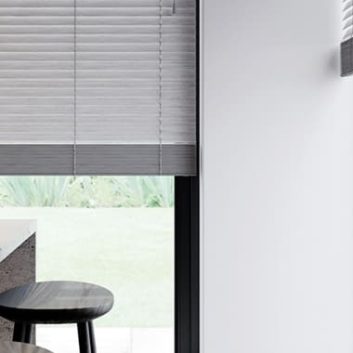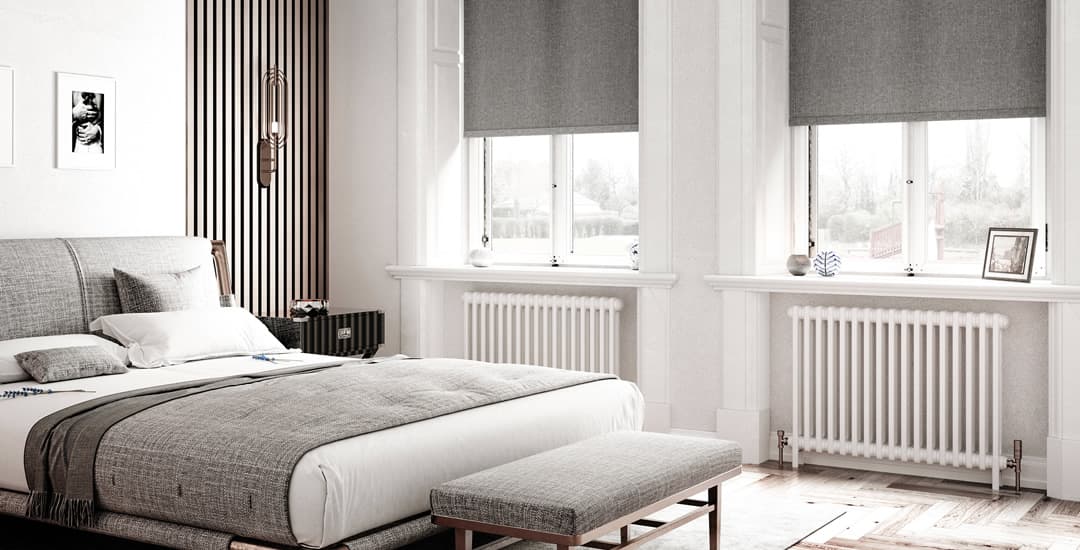
Why choose grey blinds or silver blinds, and aren’t they basically just two shades of the same colour? To begin at the beginning, grey and silver might seem to be fairly close relatives in colour terms, but they’re actually worlds apart in a great many ways.
While both a grey blind and a silver blind of the same hue would almost always suit the same sort of décor style and wider colour theme, the effect and impact achieved by choosing grey (of any shade) and silver of any shade with its own lustrous sheen can be quite different.
This means that if you’re trying to determine what sort of styles a grey or silver blind might suit or even just want to find out what type of blinds can be grey and/or silver, there are quite a few things to factor in.
When you throw in the debate over whether or not grey is a neutral colour (it is, or at least, can be) and then by association whether silver is neutral or not too (not in my opinion, but others may differ!) there’s quite a lot going on in general.
With all of this in mind, this blog post will tell you:
- Why choose grey blinds.
- Why choose silver blinds.
- What type of blinds can be grey.
- What type of blinds can be silver.
- What sort of styles or themes grey blinds suit.
- What styles or themes work with silver blinds.
- What colours work with grey blinds.
- What colours work with silver blinds.
…And a lot more besides!
Why choose grey blinds?
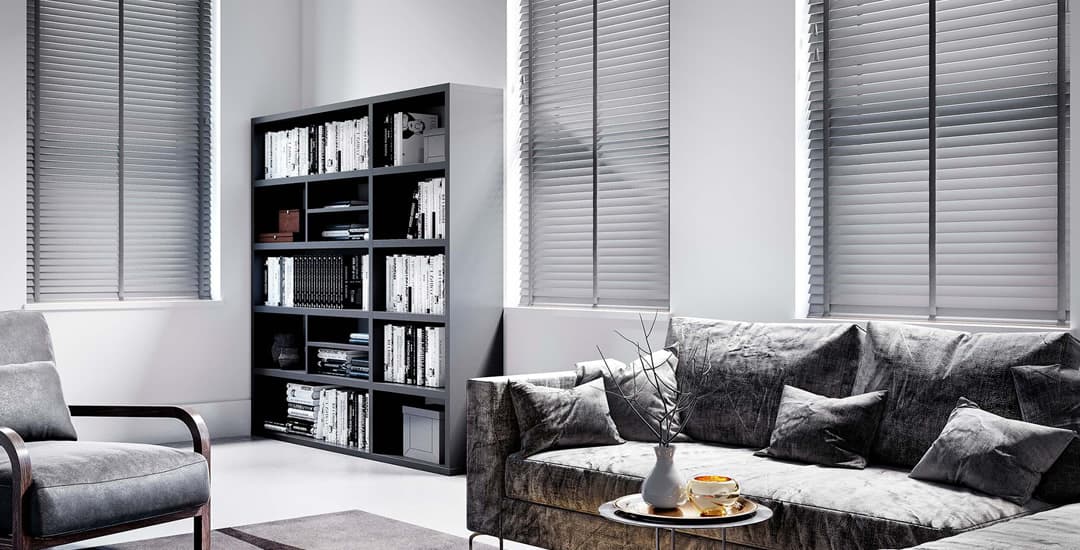
As I mentioned earlier on, grey is also a neutral colour, adding to its versatility and appeal. This too is something of a hot take as far as some people are concerned, as many people think of neutrals as being light or even forgettable colours, which many mid-to-dark shades of grey definitely are not. But a neutral colour when the term is used correctly is a colour that can be paired with and work with almost literally any other colour you can think of, assuming it has the same tone (warm or cool respectively).
My first point then in response to “why choose grey blinds” is due to its versatility and the fact it’s a neutral colour. This makes it a safe choice for applications where you want your blinds to blend in or not be a feature in their own right (such as possibly for an office, rental property, or to update a house you’re renovating in order to sell) or where you need a base colour or theme to complement other, more prominent or bolder colours.
With that said, while greys can be subtle and muted, darker or deeper greys can also be bold in their own right too; grey can either stand out or blend in seamlessly, depending on the hue and shade you pick and what’s going on around it.
Everyone will have their own take on what swayed them to choose grey blinds, and the potential range of answers I tend to get here is particularly broad as grey comes in such a wide range of shades in and of itself, from almost-white pale to almost-black dark. It can also be cool toned (which seems fairly obvious) but also less commonly warm toned, which can come as something of a shock to some people too.
Why choose silver blinds?
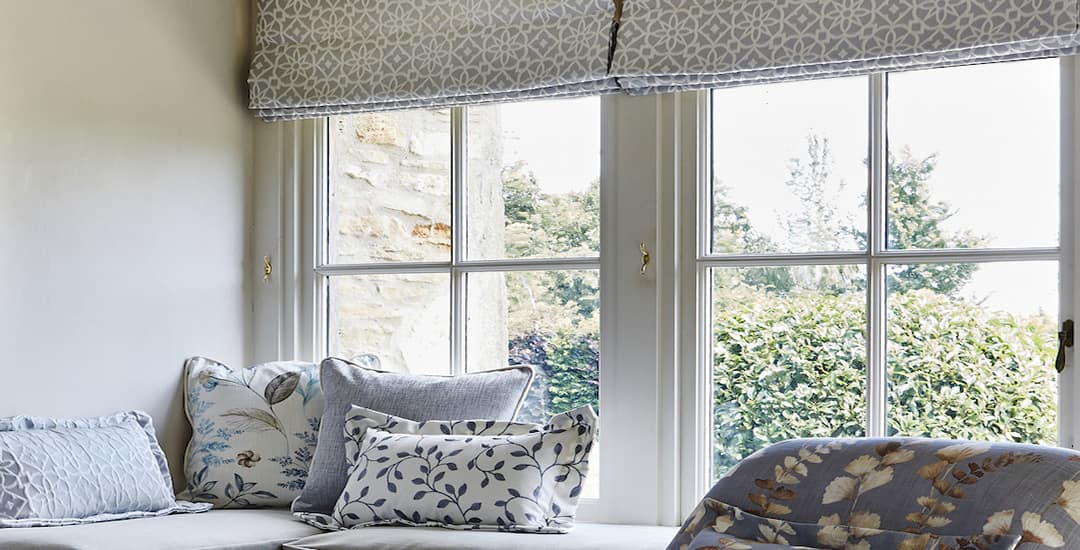
On the shiny side of the coin now then, why choose silver blinds? Hopefully, explaining the benefits of silver blinds and the uses for which people pick them (and comparing these to the “why choose grey blinds” section above) will not only provide an answer to this specific question, but help you to understand how grey and silver differ in terms of both potential applications and potential styling.
Silver blinds always have a level or shine or lustre to them, which might be very obvious; say, for a luxurious Roman blind made from real silk, or a slightly less spendy Roman blind made of satin or a similar fabric. The sheen or glow of a silver blind can also be far more muted and diffuse, being more akin to a pale pearlescent shade, or a faint, subtle lustre.
The colour spectrum of silvers is somewhat narrower than for greys; it runs from light to mid-toned, but you don’t really get dark silvers; this tends to cross over into the territory of steely shades.
That said, the sheer diversity of options of colours and finishes available for silver blinds does more or less equal those of grey blinds when you round them up and account for the different types of textures, finishes, and “degrees of shininess” they incorporate too.
Silver blinds of all types tend to look chic, elegant, and prestigious; like the precious metal that they emulate. There will always be the odd exception towards the bargain basement end of the readymade blinds price scale, when it comes to silver blinds made of very cheap fabrics; the type whose shine makes you concerned about the level of static the blind will generate and whether or not this may pose a fire risk!
With the odd few and far-between anomalies though, silver blinds tend to carry their own aura of quality and prestige, regardless of shade or hue.
Also, if you’ve seen a silver blind you really like but are drawing a blank as to what sort of theme or look it might complement, the potential options are actually a lot broader than you might first assume.
Both modern and futuristic-styled rooms all carry off silver blinds well, but so do grand, elegant traditional lounges. Silver blinds for children’s bedrooms are very popular too –whether you’re decorating a child’s bedroom in either a space-age kind of theme or a fairy-tale castle kind of theme, silver blinds look equally at home!
The same applies for adult’s bedrooms; silver blinds work in both very feminine or romantic-styled rooms, and also sleek, masculine or minimalist themes too.
What type of blinds can be grey, and what type of blinds can be silver?
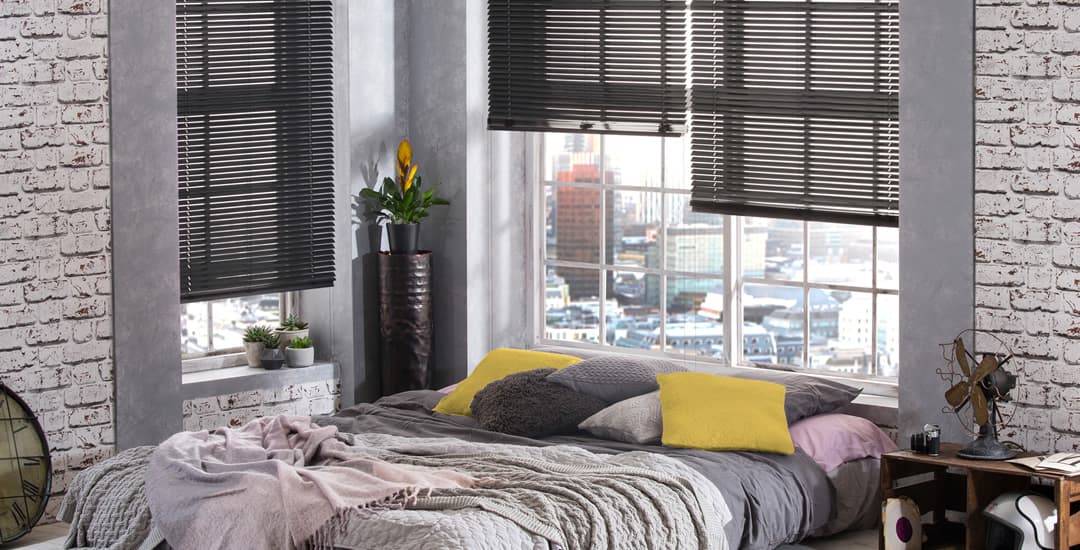
Most types of blinds come with grey and/or silver colour options, and also potentially patterns or designs/prints incorporating silver or grey; as well as various options for accent fixtures and operating mechanisms too, so there are quite a lot of options all told.
There are a couple of blinds types that aren’t really found in silver, but that can be made in grey, which might be worth bearing in mind if you’re starting with a preferred colour and basing your choice of blinds on the options available from there.
So, what type of blinds can be silver and/or grey respectively?
There are both grey and silver roller blinds
You will have more choices of silver shades and of colours from within the grey spectrum by choosing roller blinds than you will with any other types of blinds. Roller blind ranges tend to be larger than those of any other blinds type, and you will get a huge range of patterns, prints, and designs available with grey roller blinds or silver roller blinds too.
You can get grey or silver day and night blinds too
Day and night blinds or zebra blinds are comprised of alternating stripes, one of which is sheer (itself often in a subtle silvery tone) and the other opaque – this latter being available in quite the spectrum of both grey and silver options!
There are many options for grey and silver Roman blinds
Fabric Roman blinds also offer a lot of options for grey and silver colours and patterns, some being very luxurious, particularly if incorporating silver fabrics with a natural lustre such as silk or velvet.
Grey or silver vertical blinds are also popular
There are a wide spectrum of shades available within silver and grey vertical blind ranges, including those with textured finishes and abstract patterns.
Grey or silver Venetian blinds
Aluminium Venetian blinds can be finished with grey enamel paint in many shades, and also metallic silver shades.
Grey wooden blinds are another option (but silver wooden blinds are not)
Painted wooden blinds are available in several grey tones, including those with textured finishes. Silver wooden blinds aren’t something you tend to see, as people usually choose real wooden blinds partially for the beauty of the wood itself, which would be hidden to a degree if painted silver.
Grey faux-wood blinds are another candidate, but once more, silver is off the table
As is the case for real wood blinds as mentioned above, grey PVC faux-wood blinds come in various shades but once more, they don’t carry off silver very well.
Finally, both wood and faux-wood blinds made with ladder tapes rather than lift cords allow you to contrast the colour of the tapes with the slats, giving you an option of grey ladder tapes on a background colour of your choosing!
What styles or themes suit grey blinds?
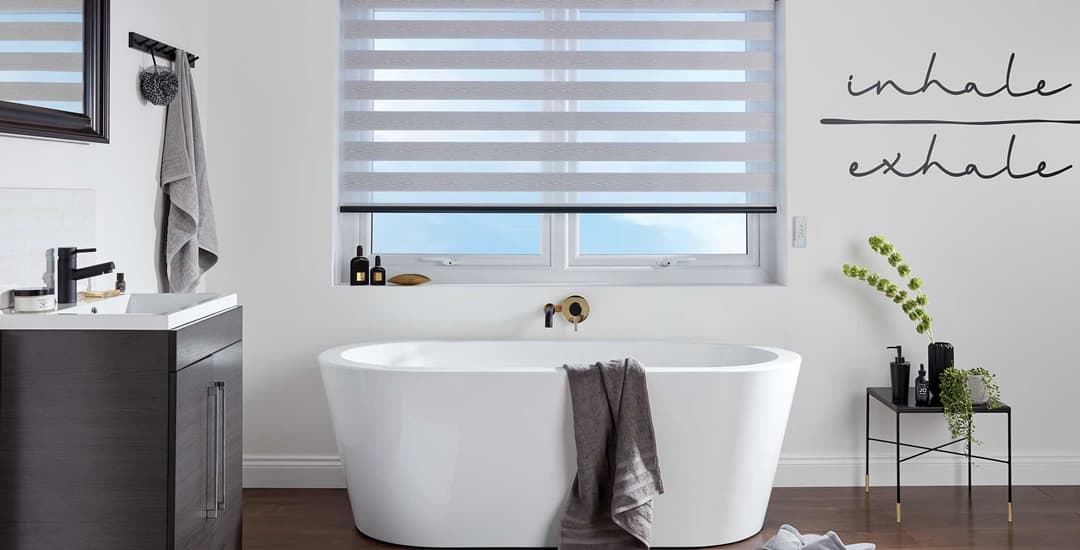
Blimey, what styles or themes suit grey blinds is, for me, a question answered more easily by flipping it – what styles or themes don’t or would not suit them? Pretty much none, assuming you chose the right shade of grey.
There are definitely specific grey shades that would look jarring and out of place in some styles of room but perfect in another, but I can’t think of a single style or application that a grey blind would look horrendous in, assuming that the room was themed to incorporate it in other places to at least a minor degree too, as opposed to leaving the blind hanging up there on its own with no mates.
To provide a very, very short off the top of my head run-down of just a few of the great many themes that grey blinds can work within, you have:
- Any sort of natural-themed room, emulating or incorporating materials like slate, granite, natural rock and so on.
- Rooms with one or more base neutral colours used or required, including dining rooms, living rooms, bathrooms, and bedrooms.
- Kitchens that involve a lot of chrome or shiny silverwork, or granite/grey/black/white fittings are all a great match for grey blinds too.
- Offices and/or home offices or “work from home” corners where you want to create or support a fairly formal theme or aura of gravitas – certainly if you use dark greys anyway. You could also use pale, subtler greys for neutral themed office blinds too!
- If you are looking at grey blinds for an office or home office, these also make for an excellent neutral, un-fussy backdrop for the inevitable Zoom calls you simply can’t dodge. They also give away absolutely nothing about your home’s interior or your general tastes, if you’re trying to maintain an aura of mystery, or more likely, degree of control over what you share about your homelife with your work colleagues or boss!
- Formal studies or reading rooms also look great with mid-to-dark toned greys, and again, lighter shades can make for a subtle backdrop that doesn’t interfere with or distract from the task at hand.
- Also, grey blinds are just about the only colour to consider if you’re a fan of brutalist architecture and styling (I have a weird penchant for this, I won’t deny it; albeit had I actually grown up in one of the paneláks that are representative of the theme, I accept that I may feel very differently) though I doubt there are more than a handful of us out there!
- Taking a somewhat outside-of-the-box approach to things too, if you’ve got an unfinished cement or concrete wall in play and accept that the final leg of that garage conversion or renovation project just isn’t going to get finished, you can turn it into a design theme and call it “brutalist” by simply adding a few dark grey blinds. I’m guessing that exactly nobody has actually done this, but feel free to prove me wrong in the comments.
What styles or themes suit silver blinds?
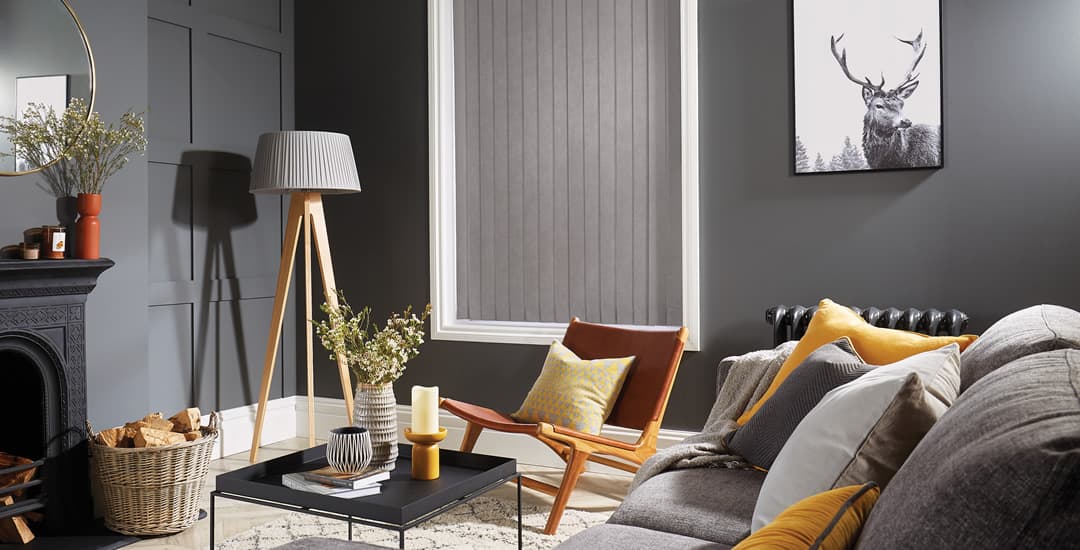
I’m not sure if I’m 100% right in my supposition that “silver is just grey but shiny,” but for practical purposes I want to say that I am. However, the simple addition of this sheen or shine or whatever it is that makes silver stuff glow can really change the nature of a blind (or anything else I guess) and result in quite a divergence of styles and applications.
Good example of this: A mid-grey necktie might well be appropriate to wear at a funeral. Make that same tie of silk or satin with a light lustre to it, and you’re good to go to a wedding.
Anyhow, what styles do silver blinds suit?
- As I alluded to earlier on, they’re a more or less universal/unisex choice for the bedrooms of both children and adults, as they work well with either a space-aged or futuristic theme, or a romantic/elegant/princess kind of theme.
- Minimalistic, ultramodern, and simply modern but not in a “statement” kind of way rooms will all pair well with silver blinds of some type, depending on their shade and level of lustre.
- Silver blinds are also more or less an obvious candidate for very chic, elegant, or grand rooms; if you’re into palatial-type styling or simply want a room that looks and feels expensive!
- One other thing I think worth mentioning when it comes to making the case for silver blinds is that the interplay of colour, lustre and also, texture make silver blinds waaaay more than a one trick pony.
- As I talked about in the intro, different types of materials used for blinds coloured silver can potentially range from gleamingly bright to the point that the local magpie pack are congregating outside of your window discussing how to break in, to a whispering subtle sheen that’s barely there.
- Silver window blinds are, based on what I see our R&D folk designing and our production folk making, the blinds that come in the widest range of different effects compared to any other colour.
- When it comes to silver blinds made of fabrics alone (Roman blinds particularly but also roller blinds and vertical blinds) the sheer range of textures and finishes available is extensive. Silks, satins, velvets, coated cottons and polyesters, waterproof silver roller blinds made from vinyl or PVC that are slightly shiny already, and fabrics made of or to emulate leather and wool… Then there’s voile fabrics… All of these have very different textures and finishes, adding to the depth and breadth of options for silver blinds.
- I’m going to just pop back up to the above bullet point and add enough punctuation to enable you to simultaneously read it and breathe in a normal manner, but what I mean by expounding on all of that is that silver blinds can also be an absolutely awesome choice for rooms where there’s a lot of depth and interest in the interplay of textures, or that you want to have a very tactile feel to them.
What colours work with grey blinds?
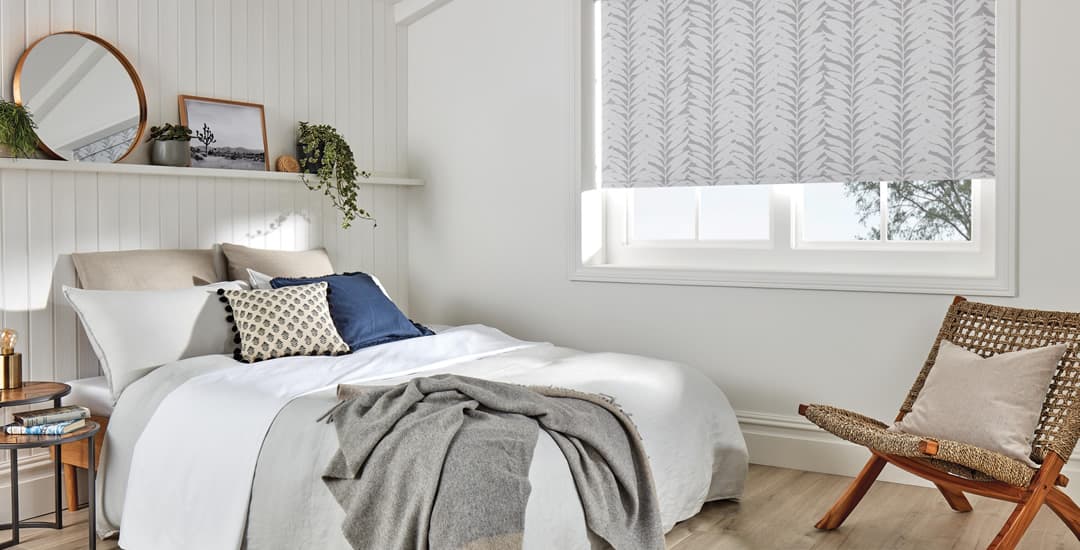
When it comes to grey blinds, grey being a neutral colour means that the world is more or less your lobster. Working with the right spectrum and colour families and temperatures to match the grey in question (or retroactively picking a grey blind to fit in with a room) is a more accurate way to explain the sort of things you’d probably want to consider.
So, what colours work with grey blinds, tone and shade dependent? More or less anything.
Some of these are obvious, including white and black, and other shades of grey that share the same tone.
Pastels also go well with lighter greys. Bold colours pair well with mid-to-dark greys.
When you’re trying to determine how to pair grey blinds with an existing room’s colours or determine what colours work with grey blinds if the blinds are your starting point, work with the tones (warm or cool) and the tint or shade (degree of lightness or darkness on the spectrum) to look for your match.
When it comes to cool and warm tones, these should be consistent; warm tones with cool tones don’t work. In terms of the tint/shade thing, there are two approaches:
The first is matching, so, say you had a colour card of greys running in order from lightest to darkest, and the grey you liked was number 16 – then look at your blue, pink, red, or whatever your other colour is, and pick a tint or shade from, or at least very close to, the same point.
The other option for pairing grey blinds with another colour and ensuring that the tint or shade is complementary is to go in the opposite direction. For instance, a darker grey with a very noticeably lighter partner colour, or vice versa.
Generally if you went this route, you’d have the lighter or more neutral colour as a base or foundation to “carry” or provide a backdrop for the more prominent colour, which in turn would usually appear in smaller areas of the room.
What colours work with silver blinds?
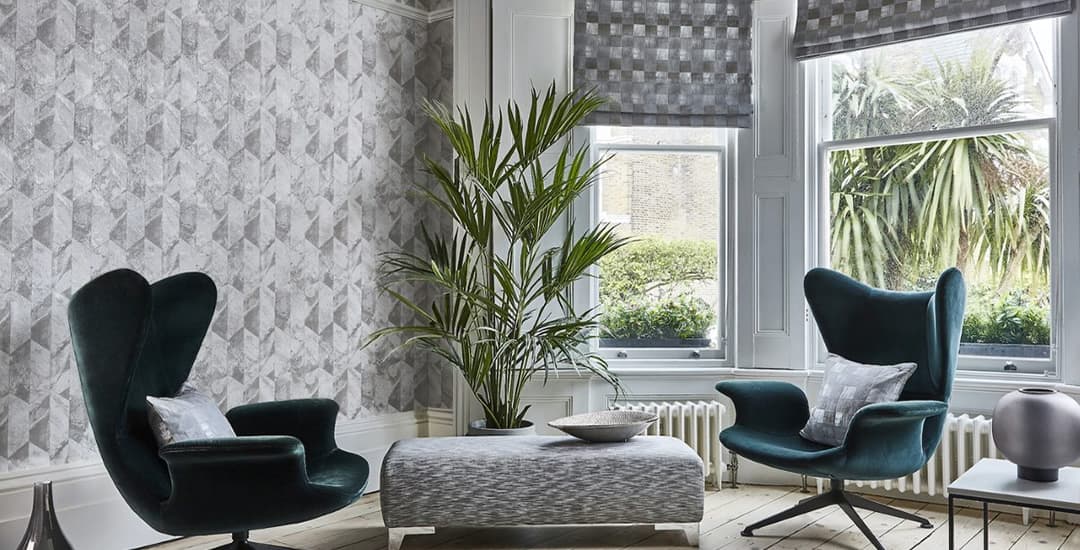
Pretty much any pastel colour works with silver blinds, with some of my favourites being pale pink, pale blue, or lilac (or all of the above).
Generally, silver blinds will be cool toned; so you’d need to look at integrating cool-toned colours to match. For instance, a salmon pink would generally be considered warm toned and would look jarring, but a light pink from towards the purple end of the spectrum would be fine.
Mother-of-pearl and oil slick or petrol effects, all integrating a shifting mixture of colours in terms of how it catches the eye look great too; with a lighter, softer silver pairing with mother-of-pearl style aspects and a darker shade to pair with a black-based colour match.
In terms of darker colours, mid to royal/navy blues are all on the cards, as are cooler-toned purples from towards the violet end of the spectrum rather than the indigo side.
Turquoise and blue-greens towards the blue side can work well with the right silver blinds too, while aqua-type shades can be a little more challenging, which is not to say they’re never going to work full stop.
Some other metallics can work with silver blinds as well; pale or cool golds, for instance.
Also, black, white, and silver can make for a really impactful monochrome palette, which can be relieved if needed with the use of a pastel shade like pink, blue, or lilac.
When it comes to matching other colours into a theme with silver blinds (or working with a theme that involves silver in any way) I do tend to find that combinations of three colours rather than two generally works best, for adding depth and interest; particularly if your dominant colour is silver.
If the silver is you accent colour, however – such as perhaps if you placed silver blinds against a pale lilac wall, and/or silver cushions on a lilac sofa – this type of two-colour combination can work really well too.
Another option that I have seen done really nicely is to use different shades of silver (three or even several) as the entire colour theme, perhaps with the occasional splash of another colour in play too.
Unlike grey blinds, there are some colours that I really don’t feel pair well with silver blinds, although I am prepared to be corrected if you have some examples that you’d like to share.
Warm-toned neutrals and natural colours such as earth shades, stone, and sand are all off the table as far as I am concerned.
Colours that we tend to think of as being warm-toned as a rule don’t work well with silver blinds either; in my opinion, even in their cooler-toned variants. To recite a few colours I would advise against pairing with silver blinds, let’s say brown, yellow, orange, and red.
I also struggle to a degree to see greens work with silver, other than pale minty greens; anything a little darker is frankly going to end up looking a little Slytherin.
Feel free to Slytherin to my inbox…
Do you see what I did there? If you’re not into Harry Potter, I guess not. Anyway, for the rest of y’all; I’ve covered a reasonable amount of ground in this blog post, and I think if there was some kind of award for the “most comprehensive answer to the questions of “why choose grey blinds” and “why choose silver blinds” respectively, I’d be a strong contender for the trophy.
Anyway, if you have opinions either way on anything I’ve said here, have something to add that I’ve missed or that you think I should know about, or want some tips or advice on choosing silver blinds or grey blinds (or possibly why you shouldn’t choose either!) go ahead and email me or add a comment below.

